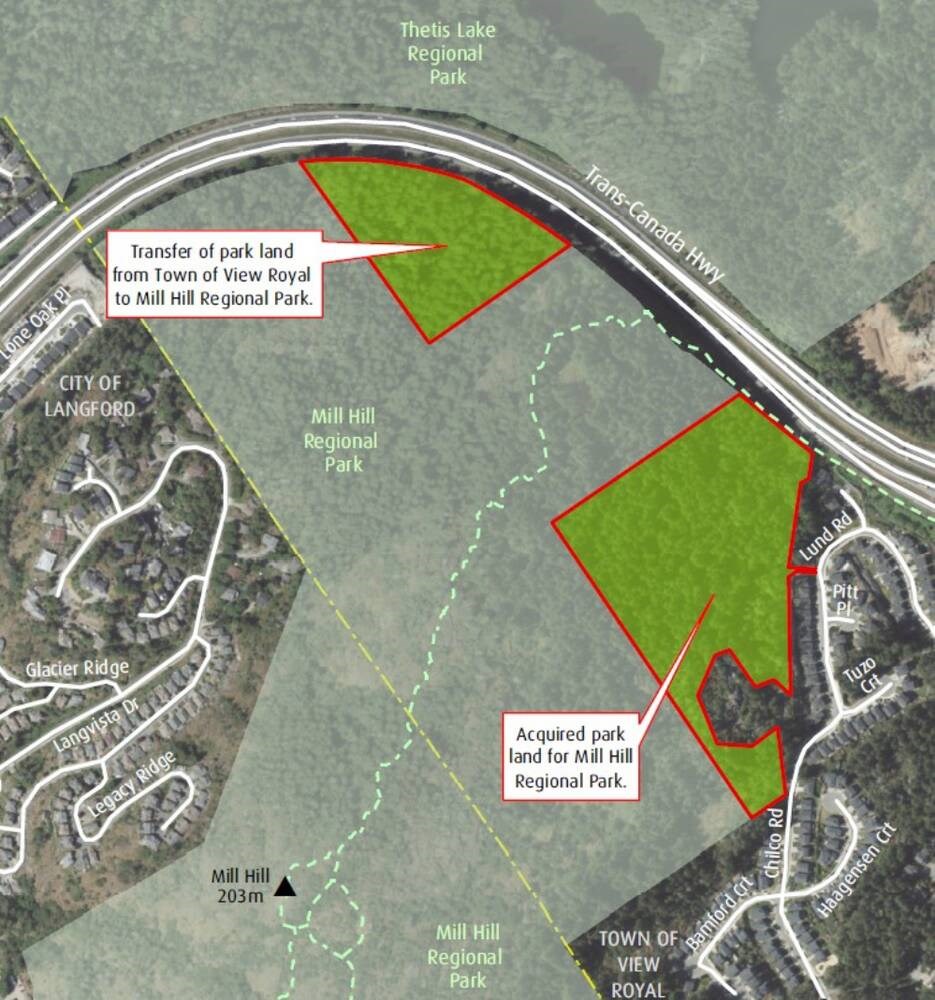View Royal has sold 9.8 hectares of land containing arbutus trees and stands of Douglas fir to the Capital Regional District for the expansion of Mill Hill Regional Park.
The municipality will get $927,500 for the four parcels and invest the funds into parkland acquisitions within the town. View Royal council had pitched the idea to the CRD with the hope it would expand Mill Hill.
“This sale to the CRD simply makes a lot of sense,” said View Royal Mayor David Screech. “It ensures continued public ownership of open space and the long-term management and maintenance by an organization that is well-equipped to take on this responsibility — a win-win not only for View Royal’s residents, but also for those in the entire region.”
The CRD said the parcels are in a coastal Douglas-fir biogeoclimatic zone and home to a significant number of species and ecosystems at risk, some ranked globally as imperiled or critically imperiled.
The parcels also span the Craigflower and Millstream creek watersheds, which play important roles in nutrient cycling, downstream fish habitat and water management.
The Mill Hill summit at 203 metres provides for scenic views of Esquimalt Harbour, Victoria and surrounding hills. The park is currently about 72 hectares in size and trails connect it with Thetis Lake Regional Park.
CRD board chair Colin Plant said Mill Hill Regional Park is one of the most significant Garry oak sites in the region and represents one of the highest concentrations of plant species at risk in B.C.
“This additional land helps to complete the Mill Hill Regional Park boundary and acts as a protective buffer for some of the high value rare plant species found there,” he said.
dkloster@timescolonist.com



